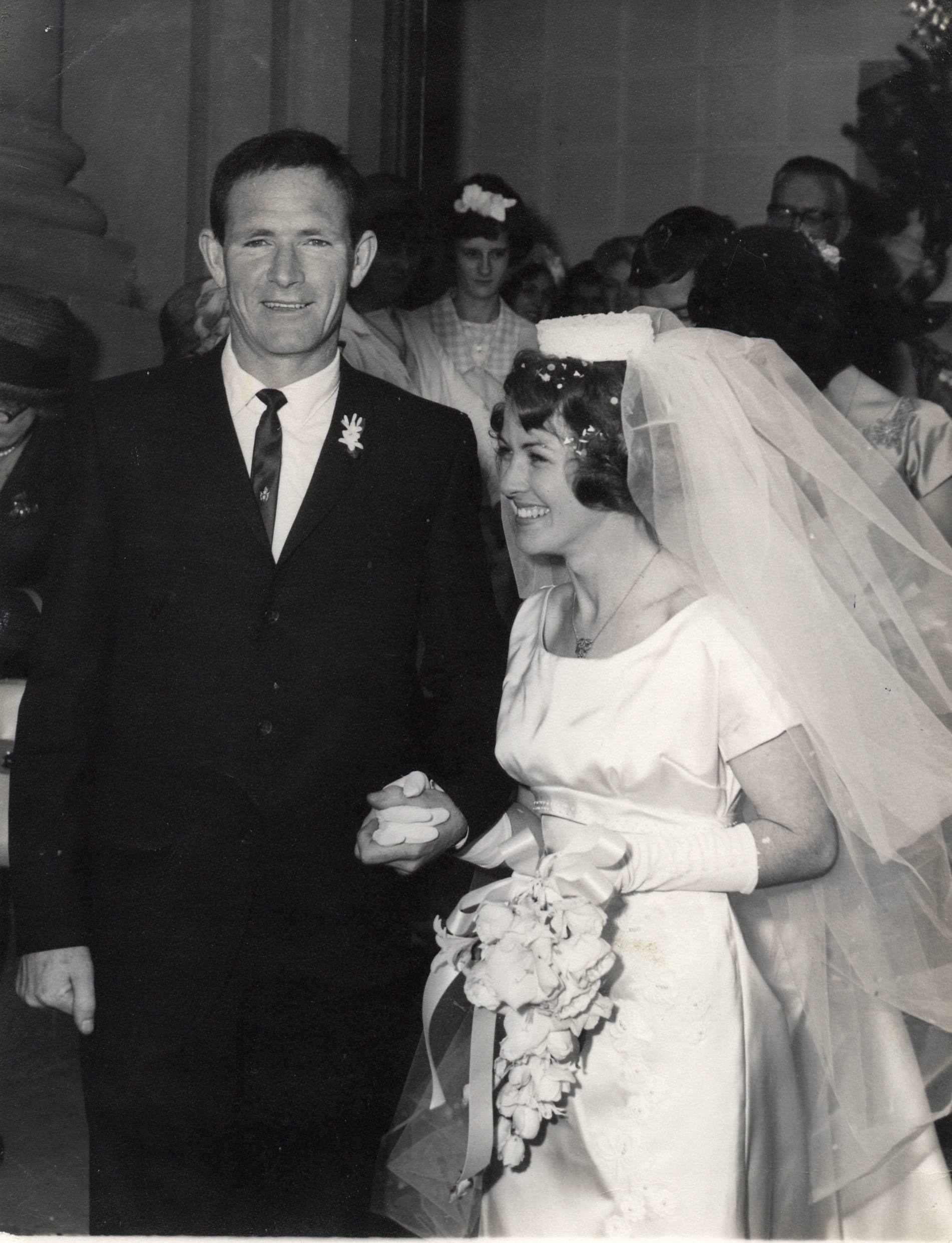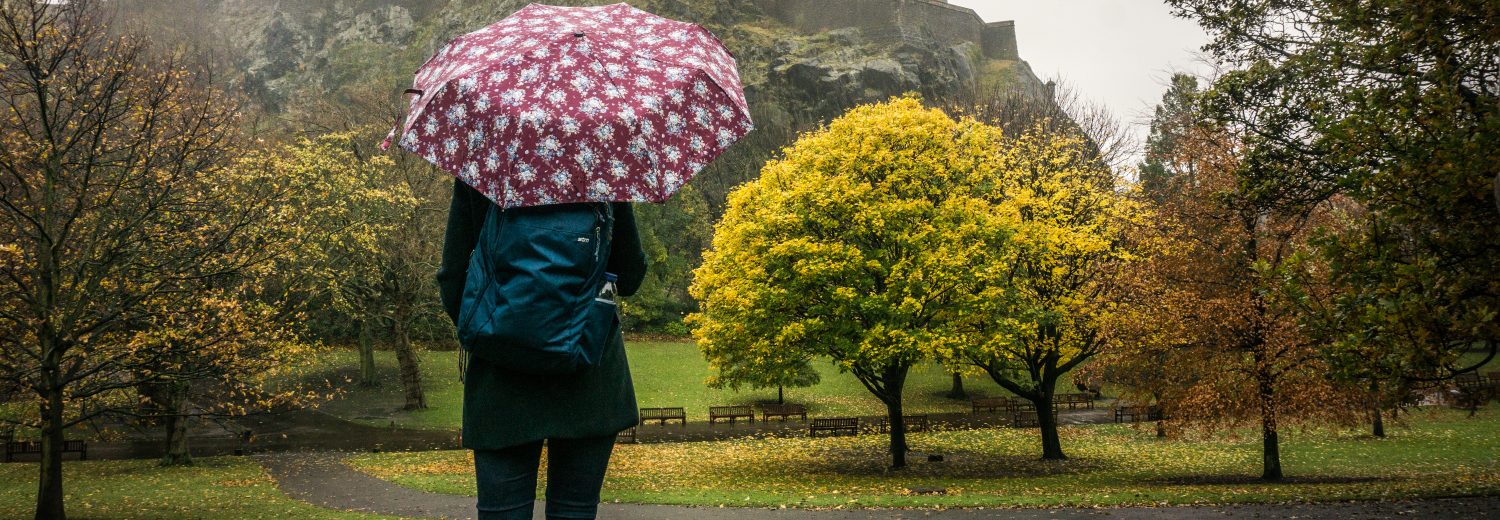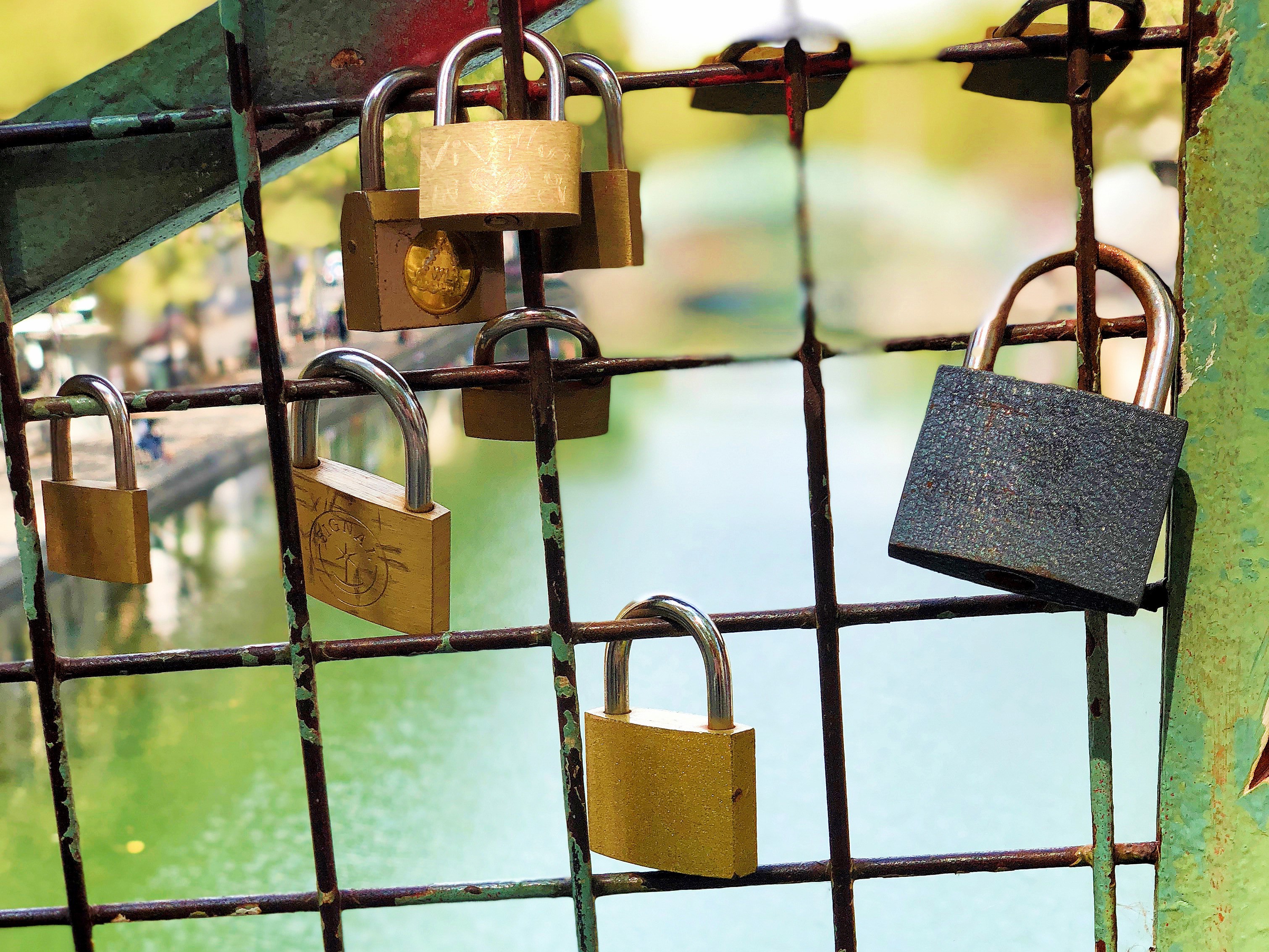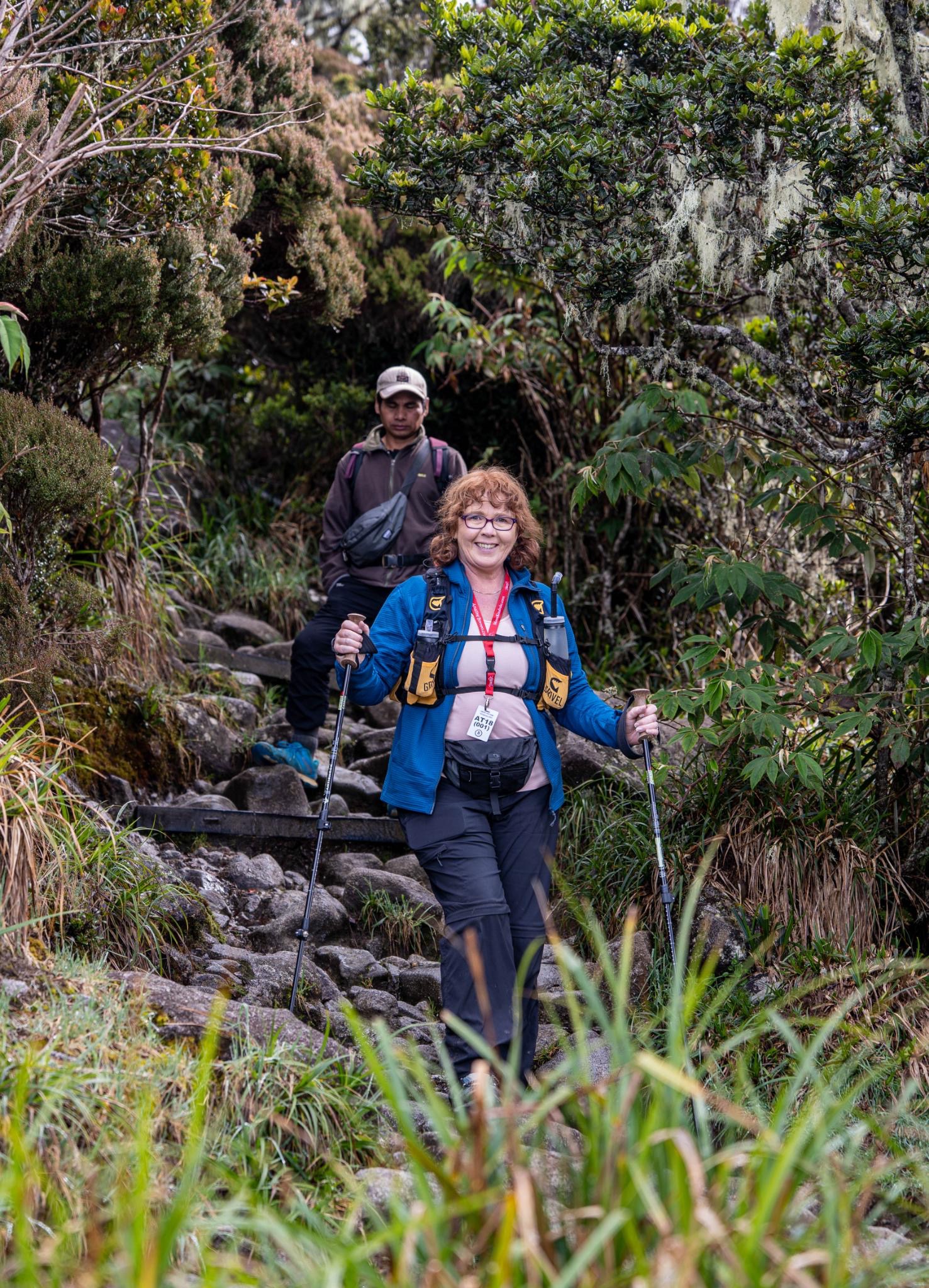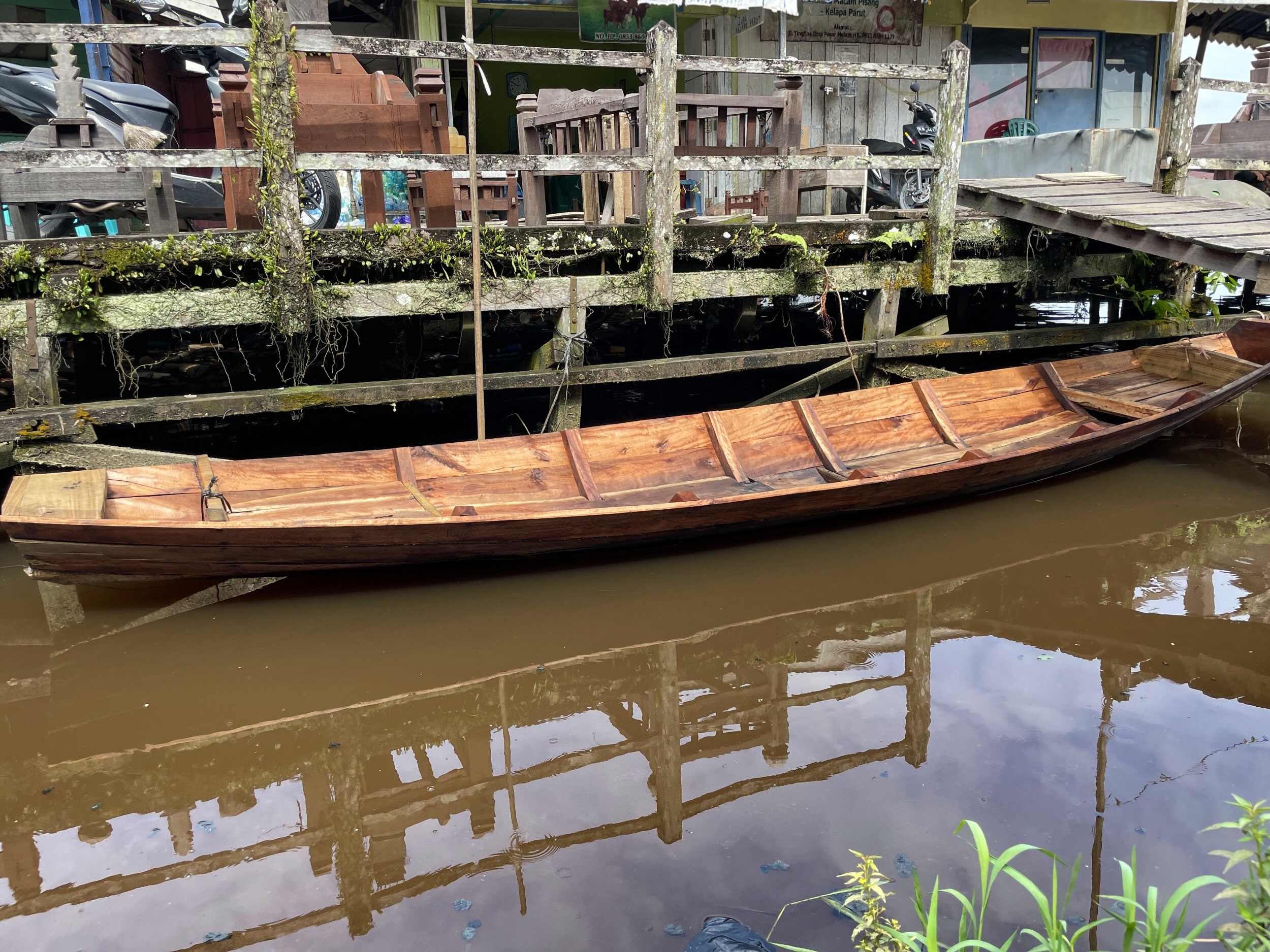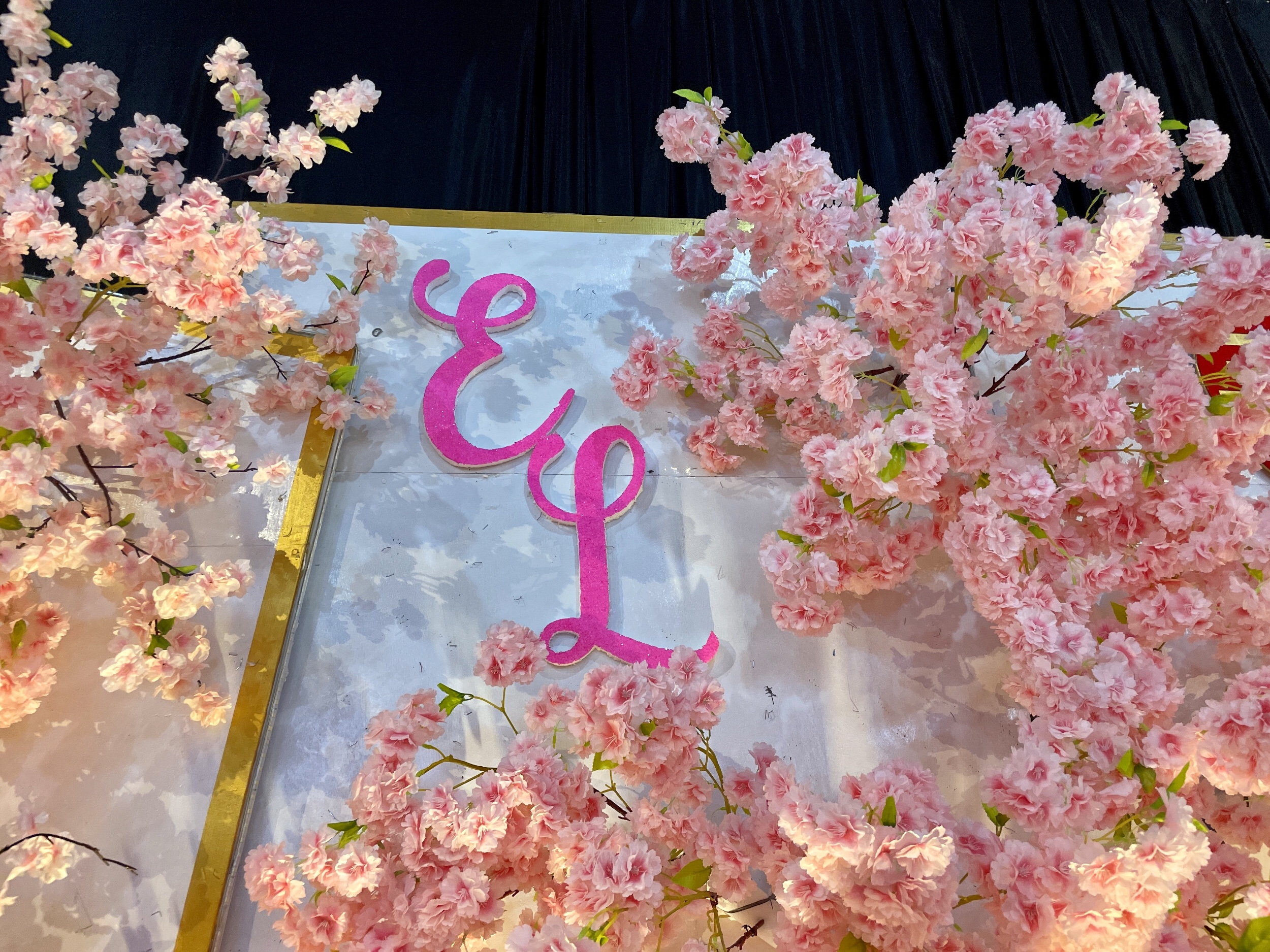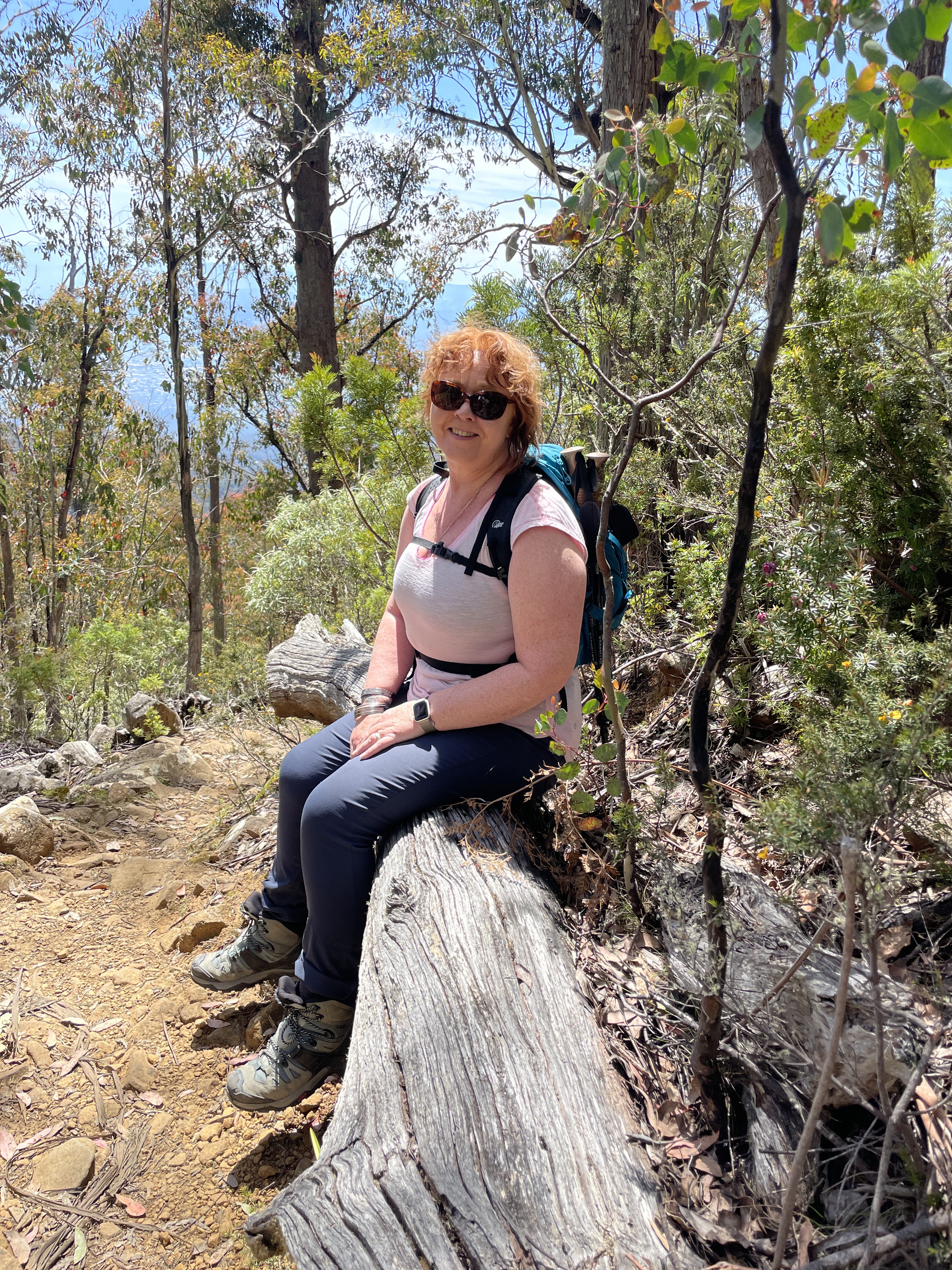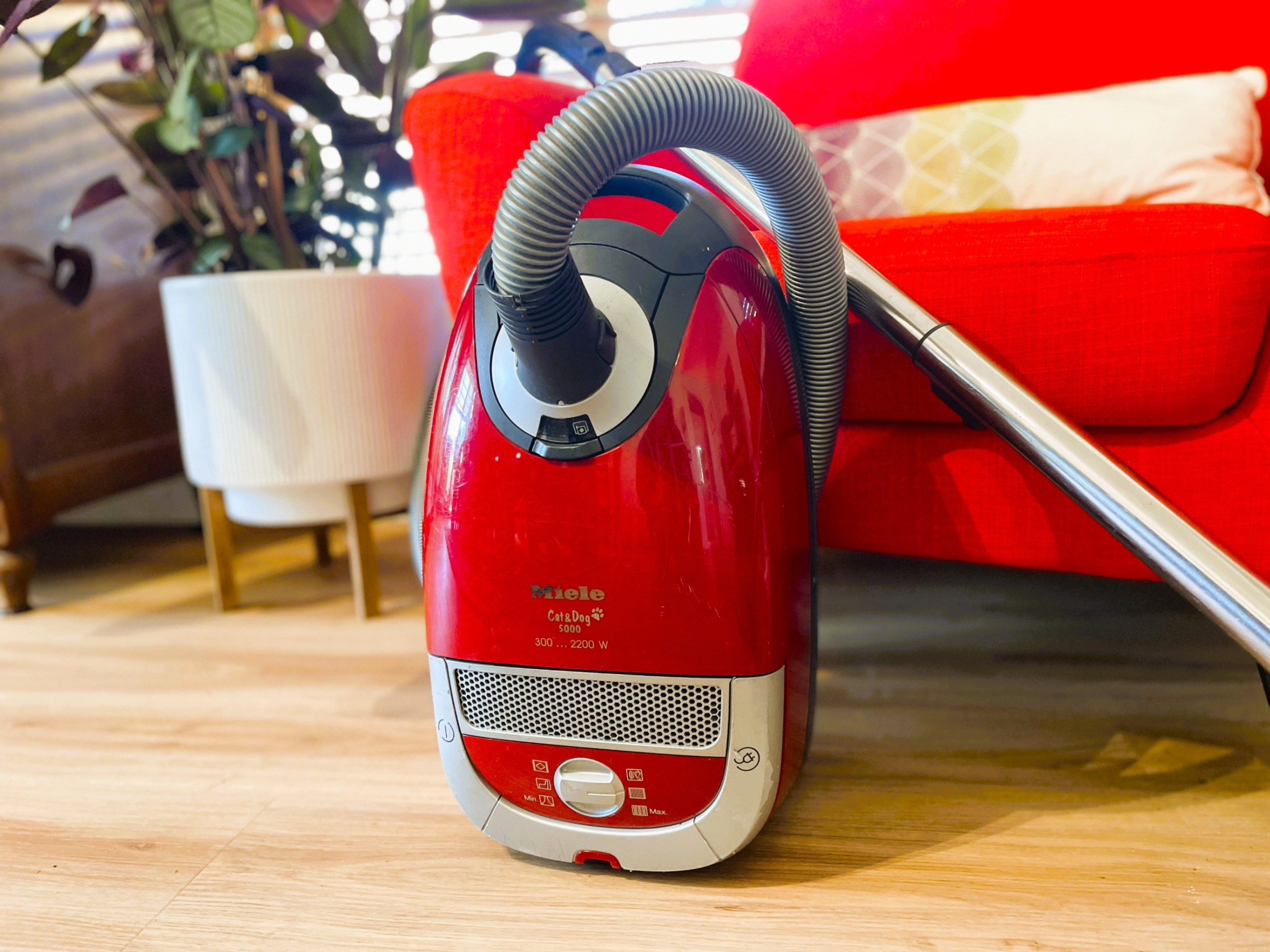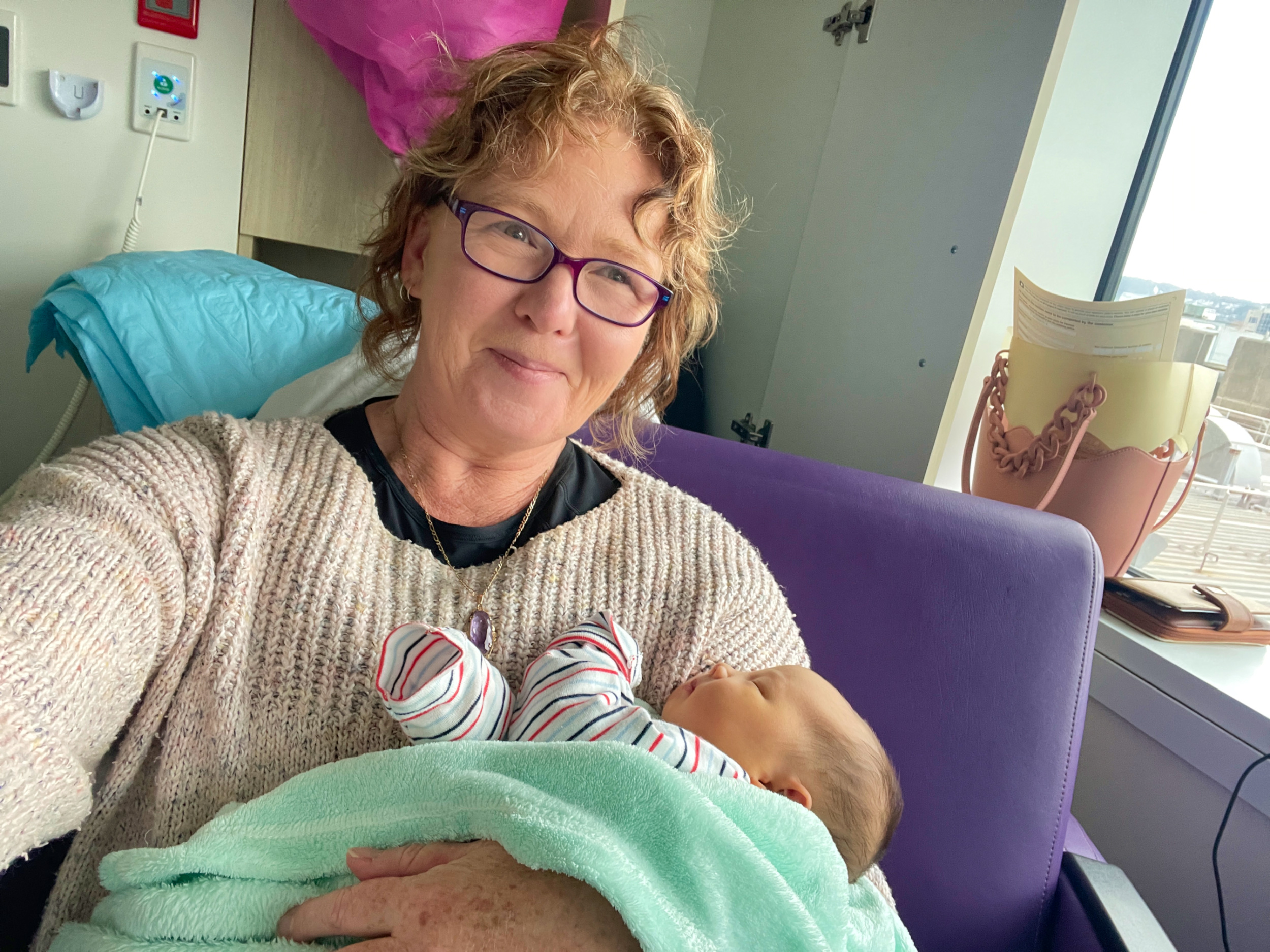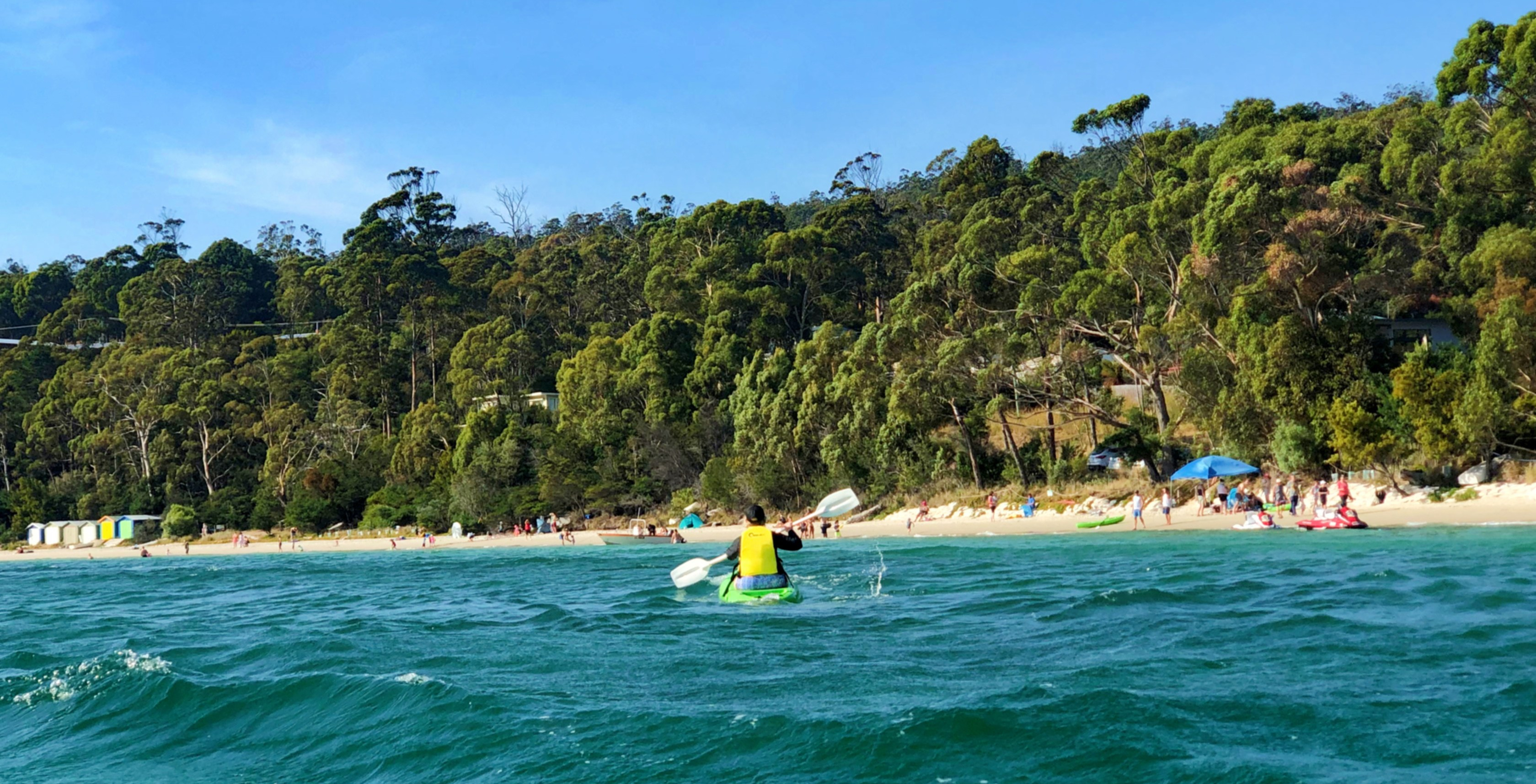SANDRA
Sandra shares her inspirational story of discovering strength, fitness and a whole new outlook on life at 56.
Dad was in the military when I grew up, and was away for at least three months at a time, so Mum became a hard-working single mother. She ran the house alone, sewing, cooking, knitting, paying bills, raising three kids, and fixing everything. She absolutely knew her tools. Dad was a mechanic so we all learned, and he taught us to never be reliant on a man.
I thought my role in life was to do everything and look after everyone – that’s how we grew up and I didn’t know any different. I ran the home, raised kids, and worked full-time. We fell into the routine and that’s just what happened.
It’s three years since I started swimming and strength training, and not only am I fitter and stronger than I’ve ever been, I’ve gained confidence to change my life.
I’ve realised my family can survive a couple of hours without me. My husband never cooked before in his life, while my daughter at home is a former chef. I go to gym three nights a week and instead of racing around preparing a meal after a full day at work followed by gym, they now cook one night each and we have leftovers the third night. I enjoy cooking more now I don’t do it every night.
It’s made a huge difference to all of us. They feel empowered in the house because they have a role and I feel freer. Watching them cook and clean their way, I’ve found an acceptance that my approach to stuff is different to others and realised that’s okay.
I learned to swim three years ago.
I’d done six years of compulsory swimming lessons in primary school but never graduated from the water orientation group because I had such a fear of drowning.
When I was 16 we were on a family holiday in Queensland. My cousin’s were really strong swimmers and would jump off my uncle’s dory into the Mooloolaba Canal, letting the swift current drag them along, then grab a rope and haul themselves up. It looked like great fun so I thought, Why not? I’ll join in!
For reasons I can’t remember, I jumped in with my beach towel. I was dragged out and under and started drowning. My uncle looked out the window of his big Queenslander and raced down to fish me out. I can’t remember much – just the really echoey noise, then my uncle reviving me and pumping the water out.
Later that same trip we were in the water skylarking around when a helicopter came over with a big loud speaker telling everyone to get out because of a shark sighting. I didn’t go in the water again that summer and developed a lifelong fear of swimming and the water.
In April 2016 – after two years of being nagged encouraged by my friend to go swimming, I rocked up at the Clarence Aquatic Centre. I was so inspired by my friend who’s a real go-getter and nothing holds her back. She’s really driven and if you hang around long enough some of it rubs off.
Just getting fitted for bathers was traumatic. I thought everyone at the pool would look young and fit, but when I went into the change rooms and saw all sorts of women wearing bikinis and stripping off, I realised age wearies all bodies. They said hi and I wondered what I’d been so worried about.
Things changed from that moment.
Once I realised there’s no point stressing about how I look when I can’t do anything about it, I got over it. Having a teenage body in my fifties is not a reality and I’m never gonna be Bridget Bardot. I keep feeding off that and getting better and better.
I got in the water, hugging the gutter. Those first weeks (months?) it would take an hour to do six half-laps of the 50 meter pool.
I didn’t take swimming lessons. My girlfriend helped when my style slipped into, prepare to panic I’m about to drown. I still remembered those childhood water orientation classes in the toddler pool – blow bubbles, turn head, breathe. Repeat. I watched YouTube videos on how to swim and replays of the commonwealth games, studying technique and mimicking. Two minute swimming lessons pop up in my Facebook feed and they’re really helpful too. I still watch them.
For the past three years I’ve gone at least once – if not twice – a week, for an hour. From managing only six half laps in an hour, I now do 34 laps of the 50 meter pool in 40-44 minutes and still do kickboard work – strengthening my legs and glutes. I feel really good in the water and have confidence I could swim to shore if I fell off my kayak.
In October 2017 I joined Spice Health & Fitness and strength training – especially strong shoulders and core – really helps. I was terrified that first time – I’d read the website but didn’t know what to expect. I felt fittish from walking and swimming but was surprised at how weak I’d become.
I couldn’t do much that first class and needed a lot of help. Classes vary every week, but the first one was a circuit – TRX, medicine balls, resistance bands, kettle bells etc. I’d never, ever done any of these things before and had to learn all the names of equipment and exercises. It took months to learn them and know what to do when the coach says turkish getups next!
I was using muscles I didn’t know I had and could barely walk the following day. I went back because I was determined to get strong and I’d found a talented strength trainer and a group of empowering women who were all really nice and supportive to me.
I empathise with new members and any woman who thinks she can’t get fit, or it’s too late. I still have moments of doubt myself, but everyone can do it – just take baby steps.
I started doing fun runs not long after I first went swimming.
I’m more of a Jalker really – jogging and walking. I used to do five or six a year, but now I just do the fun ones on long weekends with friends, where we celebrate with a gin and tonic or two at the end of the day.
On a Sunday in April 2017, I was painting at home and fell off a ladder. With my short arms and legs I reached too far and fell off, resulting in two vertical ankle fractures and a broken bone on the outstep of my foot. I missed the Tuesday class but was back Thursday. I was in a full leg plaster cast for six weeks, and a moon boot another six weeks.
It never occurred to me to stop though – strength training is a commitment so I couldn’t stop. I did find it challenging emotionally when I became the center of attention, but there was very little I couldn’t do.
All the upper body exercises I did as normal – sitting on a chair or the floor. And all the leg work was done on my right leg. It took about 18 months for my legs to feel like they were back to equal strength, and I still have little niggles.
I feel like I’m the same person I used to be but obviously I’m not – I couldn’t do these things before. I continue to get stronger and have the confidence to take on new challenges. I have a new paddle board and my next goal is to stand up longer than 30 seconds without falling off. Lots of core work needed – more turkish getups coming my way!
If anyone said ten years ago I’d be nearing sixty and loving the gym, swimming pool, and kayaking in the ocean, I would have just laughed. Now I’m a changed woman – I’m a warrior. Hear me roar.

